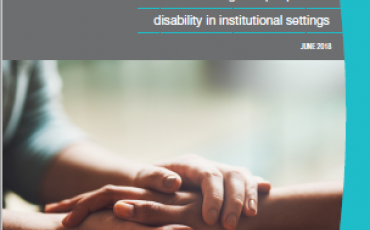Willing to Work: Good Practice Examples for Employers (2016)

In 2015, the Attorney-General Senator the Hon George Brandis QC asked the Australian Human Rights Commission to conduct Willing to Work, the first National Inquiry into Employment Discrimination Against Older Australians and Australians with Disability.
Engagement with employers was a key element of our approach. We spoke with employers of all sizes and across sectors to get a full understanding of the opportunities and constraints facing businesses. Of the 120 public consultations conducted between July 2015 and February 2016, 42 were with employers.
The Inquiry heard about employer misconceptions and stereotypes. For example, many employers believe that workplace adjustments are very costly, when research shows that a large number of adjustments cost less than $500.
Some employers, particularly small businesses, told us that they would have liked to do more to hire and retain employees with disability and older employees, but were time-poor and had limited resources and access to information.
For this reason, we have produced this resource which sets out our recommendations to businesses, examples of existing good practice and a list of available resources. More detailed discussion and further examples are presented in the Willing to Work Report.
The Inquiry met many employers who had already achieved diversity and inclusion and were achieving positive business results. These positive examples inform our recommendations.
We have presented these ideas as a suite of solutions for employers in recognition of the fact that businesses vary in size, scope and location.
Discrimination is costly. It contributes to higher absenteeism, lower productivity, higher staff turnover and increased recruitment costs, as well as lost business opportunities from abandoning experience and corporate knowledge. Discrimination stops Australian employers from accessing the full range of skills and talent.
We know that the solutions we propose are practical and realistic because they are evidence-based, and are already in place and producing good results in some workplaces.
We trust that the findings and recommendations of this Inquiry will spark action and commitment and intensify efforts to lift labour force participation of older people and people with disability who are willing to work.
Susan Ryan
The Hon Susan Ryan AO
Age and Disability Discrimination Commissioner
Recommendations for employers
The Willing to Work report makes a series of recommendations to employers in order to increase the recruitment and retention of older people and people with disability.
1. Leadership commitment
CEOs and organisational leaders should communicate their business’s commitment to an inclusive and diverse workplace to all staff. This should be supported by an organisational strategy which outlines the business case for a diverse workforce and could include goals such as: meeting voluntary targets for employment of older people and people with disability, monitoring and reporting on performance against these targets and ensuring inclusive practices in relation to recruitment, disclosure of disability and the provision of reasonable adjustments, networking and mentoring opportunities.
2. Ensuring non-discriminatory recruitment and retention practices
Businesses should ensure that their recruitment and retention policies do not discriminate against older people and people with disability. This could include reviewing recruitment processes to ensure that they are accessible and making promotional and training opportunities equally available to all employees, including older people and people with disability.
3. Building workplace flexibility
Businesses should seek to normalise flexible work by making job design, work location and hours flexible for all, as far as the demands of the role allow.
4. Facilitating transitions
Employers should support older employees who wish to transition to other industries, roles or occupations by providing skills training and identifying transferable skills. Transitions should also be facilitated for employees who may be returning to work after a period away due to illness, injury or caring responsibilities.
5. Provide targeted education and training in the workplace
In order to build inclusive, respectful workplaces, employers should provide staff with support and training about their rights and responsibilities at work, internal grievance processes, flexible leave options, any employee driven networks and the nature and impact of discrimination.
Employers should support managers and supervisors in creating and managing diverse teams and flexible workplaces by assisting with job redesign, building skills to manage employees flexibly, providing information for managers for example mental health guidelines, manager support and training on the nature and impact of discrimination.



